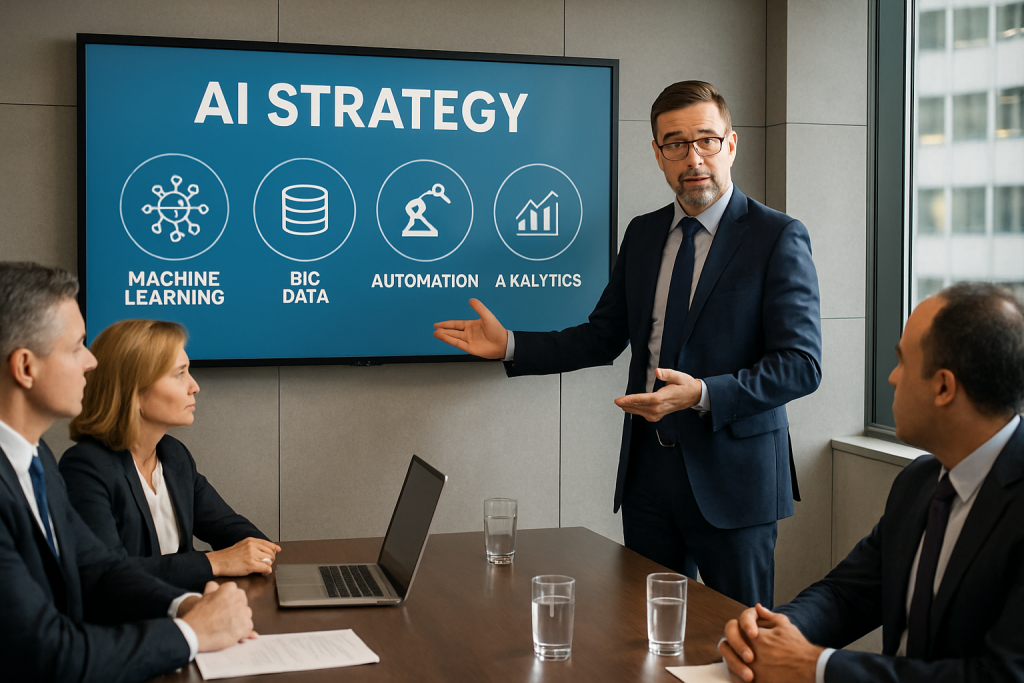Cisco Systems is gaining a competitive edge by strategically embracing artificial intelligence to enhance engineer productivity. This approach sets the company apart from peers using AI for workforce reductions.
The company, under CEO Chuck Robbins, reported impressive quarterly results that exceeded earnings and revenue expectations. This success underscores Cisco’s focus on AI infrastructure, which has attracted significant investment from major tech giants.
Why Cisco’s Human-First AI Strategy Matters
While many tech companies leverage AI to cut jobs, Cisco is committed to maintaining its workforce. CEO Chuck Robbins emphasized that AI’s role at Cisco is to empower engineers “to move faster and be more productive,” rather than displacing them.
He clarified on CNBC that while some competitors are shrinking their workforce due to AI, Cisco does not plan to follow suit. “I don’t want to get rid of a bunch of people right now,” Robbins stated. “I just want our engineers that we have today to innovate faster and be more productive. That gives us a competitive advantage.”
Record-Breaking AI Infrastructure Growth
Cisco’s AI strategy is delivering tangible results. The company has more than doubled its initial fiscal year 2025 AI infrastructure order target of $1 billion, securing over $800 million in fourth-quarter orders from webscale customers.
These orders came largely from major tech companies such as Amazon, Meta Platforms, and Microsoft, which are rapidly building out their AI capabilities. This momentum is largely driven by Cisco’s commitment to AI infrastructure as a growth engine.
Strategic Advantage Through Human-AI Collaboration
Cisco’s tactics contrast with a broader industry trend where companies are reducing headcounts amid post-pandemic corrections and economic uncertainties. Tech giants like Microsoft, Google, and Amazon are continuing to lay off employees.
The layoff trend is driven by a combination of factors, including a post-pandemic correction in hiring, economic uncertainty, and a strategic pivot toward artificial intelligence tools. Many companies overhired during the pandemic to meet surge in demand for digital services.
Robbins acknowledged that many of his peers anticipate hiring fewer people in the future as AI technology advances. However, he didn’t rule out the possibility for Cisco “down the road.” The current use of AI is not driven by workforce reduction intentions.
What Business Leaders Should Know
Cisco’s dedication to AI is evident in its recent acquisitions, such as the $28 billion purchase of Splunk, enhancing cybersecurity and analytics capabilities. With initiatives like the AI-native Hypershield system, Cisco integrates security across networks, reinforcing its AI infrastructure market leadership.
Despite positive quarterly results, Cisco’s stock experienced a 1.5% dip due to lackluster performance in its security segment, which missed revenue expectations. The weakness was attributed to budget cuts in the U.S. federal government.
Transform Productivity Without Workforce Cuts
Robbins noted that Cisco’s engineers are pivotal to sustaining competitive advantage as AI adoption deepens. By focusing on innovation over workforce reductions, Cisco is nurturing a collaborative environment where technological advances pair with human skills for optimal outcomes.
The company’s 2025 AI-driven transformation prioritizes efficiency through AgenticOps and AI Assistant, automating network operations and reducing task times. This shift signifies a departure from traditional cost optimization, reallocating human capital to higher-value tasks.
Strategic Market Positioning
For global business leaders, Cisco’s approach emphasizes the significance of AI as a tool for enhancing workforce capabilities rather than a mere cost-cutting measure. This strategy not only ensures sustained growth but also fosters long-term competitiveness in the AI era.
Cisco’s trajectory suggests that integrating AI should focus on complementing human workforce strengths, leading to more resilient business models. The company confirmed it has already secured roughly $1 billion in AI revenue from webscale customers for fiscal year 2025.
Cisco’s AI strategy is not just about technological advancements but also about driving efficiency and innovation through a uniquely collaborative approach. This strategy keeps Cisco ahead in the AI-driven infrastructure revolution, indicating robust prospects for ongoing growth and influence in worldwide markets.


